Nutrition For Endurance Athletes
Anyone who participates in a sport or leisure activity will use one of the main aspects of that activity: endurance. This falls under the category of endurance training if done for 30 minutes or more nonstop. This is referred to as “ultra-endurance” when it lasts for 4+ hours nonstop, like an ironman. Therefore, everyone who trains athletes or coaches must prioritize their endurance fitness.
Muscular and cardiorespiratory endurance are the two basic categories. Muscle endurance is the capacity to continue using your muscles even when they are tired. Cardiorespiratory endurance is the body’s ability to supply working muscles with blood and oxygen, reducing fatigue and allowing them to perform better for longer periods of time.
The energy required for endurance sports necessitates high nutritional intakes, making diet an essential component of athletic performance, recovery, and health. Lack of focus on this, particularly on some of the more minor components, can make athletes and trainers drained, ill, recover slowly, and perform less well. We’ll look at the most crucial dietary requirements for endurance athletes before and during competition training in this post.
Here Are Facts:
To develop the best dietary strategy or nutritional plan, you have studied the nutrition pyramid. The same ideas and hierarchy apply when doing this for endurance athletes:
- Energy Balance
- Macronutrients
- Micronutrients – Water
- Nutrients TIming & Frequency
- Supplements
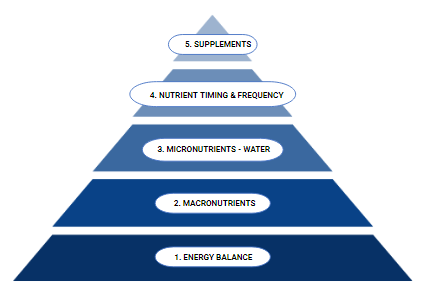

Discover How I Can Help You Lose Weight
How to meal prep – even if you don’t have any nutrition background!
A little-known way to lose weight – you’ll be amazed!
A stupidly simple trick for losing your belly fat.
What the professionals in fitness do when they want to lose weight.
The secrets of losing belly fat. This one will blow you away!
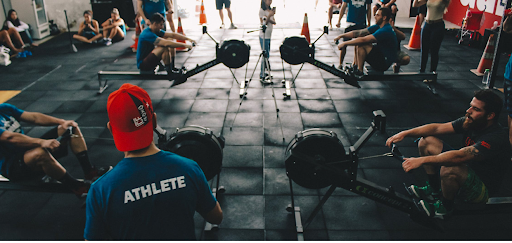
Energy Balance
The necessity of energy and the consequent high food requirements to support endurance performance have already been covered. As a result, determining how to estimate an endurance athlete’s daily caloric demands is a crucial first step in creating a diet that contains enough calories to meet those needs during both training and competition.
The aerobic energy system is largely used in endurance training. In this system, adenosine triphosphate (ATP), a powerful energy molecule, is produced by the breakdown of both lipids and carbohydrates. Although the aerobic system has the potential to manufacture ATP indefinitely, it does so considerably more slowly than the anaerobic system. Due to this, the speed of endurance events is substantially slower than that of anaerobic activities. Aerobic power is the rate at which ATP is created.
Athletes have more working power because their aerobic power increases with ATP production. Most endurance athletes practice boosting their aerobic capacity so they can excel in their sport or leisure activity.
The balance of energy in and out must be prioritized for endurance athletes. This can translate for certain endurance athletes into an increase in daily calories of 2-3 times that of their non-exercising peers. We follow the same process as before to calculate the energy needs of these athletes.
For instance, Catherine, a 35-year-old decathlon competitor, will cycle, swim, and run a combined 50 to 60 miles per week. Her weight is constant at 140 pounds, and improving her athletic performance is her main objective.
Therefore, we must determine her basal metabolic rate (BMR), which is her daily calorie expenditure without the contribution of either digestion or exercise: –
Bodyweight (in pounds) x 10 (multiplier) = 140Ibs x 10 = 1400kcals
We then must account for her total daily energy expenditure (TDEE), which includes her BMR, non-exercise-associated thermogenesis (NEAT), exercise-associated thermogenesis (EAT), and thermic effect of feeding (TEF). We can do this using the below calculation:
- Sedentary: little or no exercise = BMR x 1.2
- Lightly Active: light exercise/sports 1-3 days/week = BMR x 1.375
- Moderately Active: moderate exercise/sports 3-5days/week = BMR x 1.55
- Very Active: hard exercise/sports 6-7 days a week = BMR x 1.725
- Extra Active: very hard exercise/sports and physical job = BMR x 1.9
We know Catherine works out hard 6-7 days per week to cover that much ground. Therefore,
BMR x Activity Level = TDEE TDEE = 1400kcal x 1.725 = 2415kcal
Contrary to someone who wants to gain or lose weight, this formula does not require adjustment. It should be understood, though, that this is just the beginning.
The calorie intake based on daily exercise levels may need to be further adjusted. For instance, if Catherine trained every day and her weekly mileage was double on two of those days, then she would need to eat more calories on those days.
For instance, calories may be adjusted to the calculated 2400 kcal on days of rest, recovery, or decreased training volume. But you could be better off employing a high activity level multiplier, like 1.9, for those two days of extremely difficult and prolonged endurance training.
For example: TDEE = BMR x Activity Level TDEE = 1400 x 1.9 = 2660 kcals
Therefore, to make up for this on days with more exercise, calories can be about 2700 kcal. You must also be aware that if you are dealing with a competitive athlete who competes in several staged events, their activity level may range from 3 to 4 (rising from 1.7 to 1.9), and you must significantly increase your daily calorie intake during such times of competition.
For endurance athletes, this can lead to a high food intake, which is why so many of them lack this crucial nutritional component. To make eating large amounts of food as simple and feasible for them as possible, we must prioritize nutrient-dense foods, the timing of meals, and the frequency of meals. This is why having a predetermined nutrition plan might be helpful.
Calories Consumed During Training or Competing
In a perfect world, an athlete would constantly replenish calories used up during training to prevent daily swings in energy supply. This is tough to perform for a variety of reasons. The number of calories expended varies from sport to sport and from person to person, making it very challenging to determine.
Consuming nutrients is challenging because of the athlete’s limitations on movement, mental clarity, and general viability during training and competition.
Therefore, the active athlete must take into account the crucial elements that will have the biggest immediate effects on his or her performance: sodium, hydration, and carbohydrate levels. We can improve performance by concentrating on these elements rather than total calorie intake. As blood flow is diverted from the intestines to the working muscles when you concentrate too much on nutrition ingestion during exercise, it might cause problems with the digestive system. Carbohydrates are the only nutrient that contains calories at this stage because they are the body’s main source of energy. When engaging in prolonged (> 2 hours) high-intensity activity, it is recommended that people consume between 0.36 and 0.55 grams of carbohydrate per pound of body weight per hour of exercise (0.8 to 1.2 grams of carbohydrate per kilogram per hour).
For example: 150lb individual on a 3-hour cycle = 54 – 82.5 grams per hour
Calories Following Exercise or Competition
Following intensive endurance training or competition, many endurance athletes lament their lack of appetite, which might hinder a full recovery. Athletes are advised to ingest 200–300 calories, primarily from protein and carbohydrates, right after exercising. This will promote post-workout muscle glycogen replenishment quickly and supply crucial amino acids for tissue repair and growth. Following your workout, you should consume a larger meal that is higher in calories, macronutrients, micronutrients, and water.
Macronutrient Requirements
We’ve already established that endurance athletes will need more calories. Increased glycogen needs, which come with endurance training, necessitate extra carbohydrates. Of course, these athletes’ diets must also include protein and fat, and they need a balanced diet just like everyone else. For each of the macronutrients, let’s further dissect these suggestions.
Key insight: In our digestive system, carbohydrates are reduced to their most basic form, typically glucose, and then absorbed. They are then absorbed in the muscle and liver, where they are repackaged to create glycogen, an extremely complicated sugar. The first 90 to 120 minutes of exercise are where our muscles get their energy from. After that, this source runs out.
Carbohydrate Requirements
Since they serve as the main source of energy for endurance athletes, carbohydrates are important to their diet. High energy demands are placed on the person by repetitive, long-duration exercises such as those found in endurance training. The body’s inadequate glucose reserves make this situation worse. Accordingly, the amount of muscle glycogen that has been stored throughout an endurance workout has a direct impact on the time it takes to reach exhaustion. The athlete feels more tired when their liver and muscle glycogen stores are drained during endurance training. It’s sometimes referred to as “hitting the wall” or “bonking.”
Because they are essential to an athlete’s performance and recovery, carbohydrates should not be undervalued in this area.
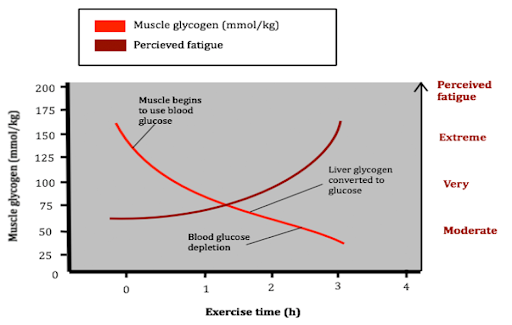
Calculating Carbohydrate Requirements
For athletes doing moderate-to-intense endurance training or competition, the current guidelines for daily carbohydrate consumption range from 5 to 12 grams per kilogram.
Catherine’s daily intake, if we use her as an example once more, might be:
140 pounds ÷ 2.2 = 63.6 kg of bodyweight 63.6 x 5-12g of carbohydrates per day = 318-763g of carbohydrates per day
As you can see, there is a wide variety, as well as a significant daily intake of carbohydrates. Here are some ideas on how to further break it down:
5-7g/kg if training 1 hour per day
8-10/kg if training 2 – 4 hours per day
10-12g/kg if training 4-6 hours per day or more.
The placement of this intake within a larger, well-balanced diet must be taken into account as well. It’s crucial to correlate carbohydrate intake with total calorie intake at all times. Generally speaking, endurance athletes should try to consume 50–65% of their daily calories from carbohydrates. In our example, Catherine consumed 2400 kcal daily in total. As a result, 300g of carbohydrates per day would provide 50% of total daily calories, resulting in an ideal daily carbohydrate intake of 5-6 g/kg while still eating a balanced diet.
Key insight: Why do we recommend carbohydrate intake based on body weight rather than as a proportion of total calories consumed? The latter was employed as a kind of dietary prescription for many years. However, 65% of people trying to lose weight (on a calorie-restricted diet) will not get nearly enough carbohydrates to sustain them.
Carbohydrate (Glycogen) Loading
A common strategy utilized by many athletes to fully saturate their muscular energy stores with fuel is carbohydrate loading. This will guarantee top performance. To give the muscles time to rest and properly recover, this loading phase is often carried out in conjunction with a lower training load, commonly known as “tapering.” This procedure is applied two to five days before an event.
The recommended daily carbohydrate intake increases from 50 to 60 percent of total calories from carbohydrates to 65 to 70 percent. This translates to 500–600 grams of carbs per day, or 8–10 g/kg on average. That is a lot of carbohydrates, as was already indicated, so specific suggestions ought to be made.
Consume 0.45 g/lb (1 g/kg) of carbohydrates within 0–60 minutes of exercise to prevent unwanted weight gain or sluggishness from the increased carbohydrate intake.
Protein Requirements
As would be assumed, endurance athletes need protein just like they need carbohydrates. The average recommended intake is 1.2-1.4 g/kg per day, which is higher than what many athletes will ingest, according to research.
This diet is comparable to that of anaerobic athletes who train for strength and power. Although the goal of aerobic exercise is not to increase strength or muscle mass, it is thought that repeated contractions and impact activities may accelerate the breakdown of muscle protein. Additionally, it has been demonstrated that protein synthesis increases after endurance training, underscoring the importance of getting enough protein each day.
Numerous sportsmen have reported improved recovery and muscle maintenance, demonstrating the advantages of this. Of course, these suggestions are just the beginning, and some people might benefit more from a higher protein diet, like 2 g per kg per day. Based on the total number of calories consumed, the frequency and intensity of their workouts, and whether they want to gain or lose weight, this decision should be made.
Protein Before Endurance Training
The importance of carbs in the 1-4 hours before exercise has already been established, and research suggests that protein should be consumed during this time as well. Before exercise, consuming protein can help sustain energy levels, boost feelings of satiety, and supply enough amino acids to balance out the accelerated rates of breakdown that will happen.
To benefit the most from this research, protein intake should be combined with carbs consumed within 1-3 hours following exercise.
Protein During Endurance Training
For athletes, the amount of protein used during endurance activity is a crucial factor. According to research, the body will oxidize and metabolize specific amino acids during exercise in addition to excreting them from muscle. According to this research, BCAAs currently provide athletes with the most potential and advantages.
Leucine, valine, and isoleucine are BCAAs that may boost athletic performance when consumed. Although the exact cause of this is unknown, some studies imply that they may be used to produce energy, stimulate insulin for increased glycogen synthesis, and/or suppress central fatigue. At this time, protein should be simple to digest, and BCAA supplementation is a popular option.
Protein Post Endurance Training
For athletes, protein will help with recuperation but not as much as carbohydrates will for endurance activity. Due to the heightened insulinemic response that protein might trigger, research has revealed that athletes may restore glycogen more quickly after exercise when they combine carbohydrates and protein. The study also reveals that this advantage might only exist if not enough carbohydrates are consumed. This means that for those who find it difficult to eat a lot of carbohydrates after exercise, this may be a good strategy. The fact that there will be more amino acids in the blood will also help with recovery and muscle restoration.
15 to 30 minutes after exercise, protein should be consumed with quick-acting carbs that are also quickly and easily digestible, such as whey protein powder. The optimal amount of protein to consume after exercise is 6–20 g. The recuperation process can continue, and daily requirements can be met by consuming enough protein at subsequent meals.
Fat Requirements
Even though protein and carbs are essential components of an endurance athlete’s diet, fat is also a nutrient that must be taken in. As it provides very little improvement in athletic performance, it doesn’t need to be consumed at such high levels.
Sometimes, sports nutritionists and coaches will implement a “fat loading” phase, which is a period, typically three to five days before an event, to significantly increase calories from fat. As stored glucose is a known performance barrier for endurance athletes, the objective is to urge the body to utilize more body fat for energy. The evidence suggests that even if fat oxidation increases during endurance exercise, performance might not necessarily benefit. Additionally, research has shown that athletes experience headaches, weariness, and lethargy during this low-carb/high-fat training period, which may result in less effective training adaptations for the next competition.
As long as it doesn’t take the place of the carbs and protein needed for successful endurance exercise, athletes can and should include fat in their diets. Therefore, protein and carbs are prioritized over fat when determining a person’s daily fat requirements. 20–30% of the diet should typically be made up of fat, which will help with total calorie intake, supply vitamins, and minerals, and provide necessary fatty acids.
Additionally, there are no prerequisites for using fat before, during, or right after endurance exercise; all that is required is that daily goals are met.
Micronutrient Requirements
Endurance athletes can benefit from including high quantities of specific vitamins and minerals due to the demands of endurance training as well as its depleting nature and the stress it imposes on the body.
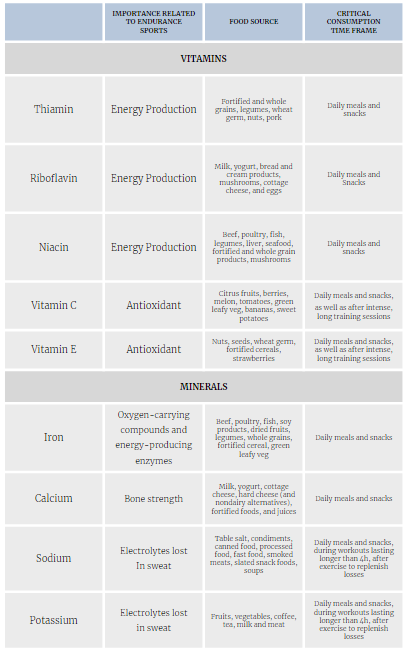
Fluid Requirements
The most important nutrient for maintaining life is water.
For endurance athletes, water also serves the additional purposes of maintaining blood plasma volume, reducing the amount of oxygenated blood delivered to working muscles, and regulating body temperature (heat regulation). We also know that getting enough water helps us perform at our best and endure longer.
Athletes must constantly monitor their daily fluid intake to avoid dehydration because prolonged exertion increases their risk. Dehydration of even 1% to 2% is typical and frequently inevitable during endurance exercise.
Prior to exercise, athletes should “weigh in,” and they should also drink enough water every day. After the event, 500 ml of water should be consumed for every pound lost, but no more than 400-800 ml per hour. If weight gain occurs, athletes should drink less water and monitor their fluid intake.
It is the athlete’s responsibility to maintain adequate hydration because fluid intake and hydration levels are highly individualized. They are the only ones best suited to handle this on a daily basis.
Nutrient Timing
For endurance athletes, the frequency of meals is a matter of personal preference. Smaller, more frequent meals seem to be beneficial for many people because of the possible high levels of food intake, particularly carbs.
The most crucial elements for timing nutrients for endurance athletes have already been discussed, however, they are listed below for your convenience.
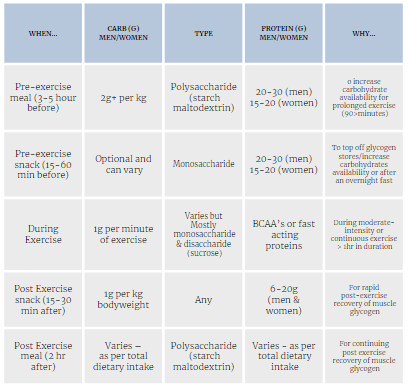
Supplements
A number of important macro- and micronutrients that endurance athletes should consume in greater quantities have been mentioned. Even though food can provide all of these, supplements can help to ensure that daily requirements are reached.
There are now numerous options available for athletes to use because performance supplements have now penetrated the endurance community. As long as they are of excellent quality and contain dependable, secure ingredients, they can be used to boost performance. Additional advantages that are worth taking into consideration can be obtained from specific supplements that have been developed to aid in the supply of nutrients and natural performance enhancers throughout the workout window.
Conclusion
As an endurance athlete, it is crucial for you to consume the nutrition your body needs in order to perform at your greatness and be competitive against your opponents. Due ensure you are consuming all the food groups your body needs and supplements.




0 Comments